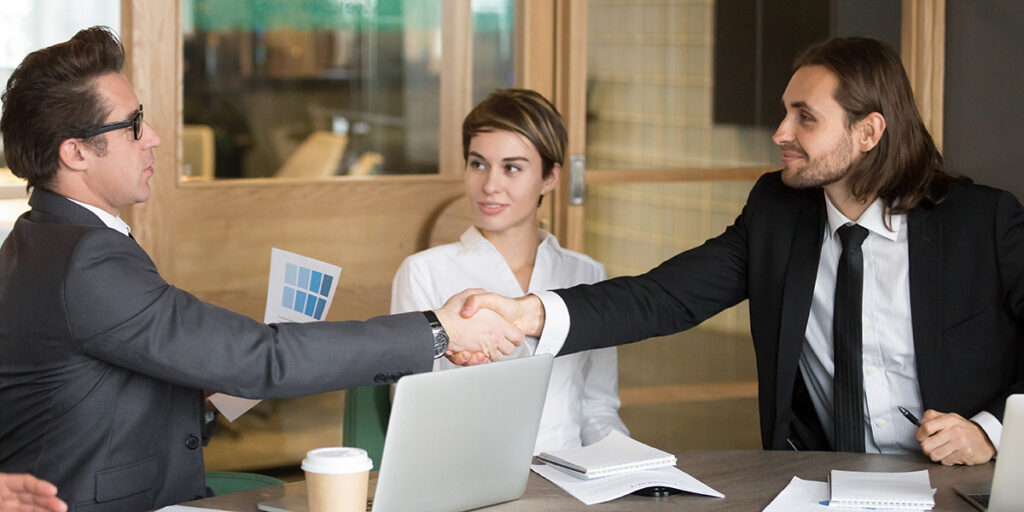
I’m Michelle Regner, founder of Business Brokers of America. I help business owners navigate every step of the sale—from organizing financials to negotiating the right deal—so they feel supported, informed, and in control. My mission is simple: to make sure you exit on your terms—with confidence, clean financials, and a strategy that protects what you’ve built.
If you’re gearing up to sell, you’ve likely heard the term EBITDA tossed around like it’s the magic number. It matters—but it’s not the full story.
At Business Brokers of America, we’ve worked with many sellers who were laser-focused on EBITDA, only to find themselves blindsided when serious buyers started digging into the financials.
Here’s what real buyers are actually looking for—and how to make sure your numbers tell the right story.
Related: 6 quirky (but very real) reasons buyers walked away after signing the LOI
What is EBITDA—and why does it matter?
EBITDA (Earnings Before Interest, Taxes, Depreciation, and Amortization) is a standard way to measure operating performance. It removes variables that differ across businesses, giving buyers a clearer view of profitability.
Formula: EBITDA = Net Income + Interest + Taxes + Depreciation + Amortization
But while the formula is simple, getting it right isn’t. Sellers often miss key add-backs—like non-cash expenses or personal perks—that should be recategorized.
And for businesses under $3 million in revenue, buyers often rely on Seller’s Discretionary Earnings (SDE) instead. It’s a more accurate reflection of what a new owner-operator could actually earn.
Tip: To earn buyer trust, make sure your financials are clean, consistent, and backed by at least three years of tax returns, P&Ls, balance sheets, and a trailing twelve-month (TTM) report.
Net income vs. EBITDA: what’s the difference?
Think of net income as the bottom line on your tax return—what’s left after all expenses. EBITDA, on the other hand, strips out certain expenses to give a more apples-to-apples view of profitability.
Both matter, but they serve different purposes in a sale.
Related: How to price a business for sale: 7 mistakes that could cost you the deal
Why buyers don’t stop at EBITDA
Serious buyers recast your numbers into Adjusted EBITDA or Seller’s Discretionary Earnings (SDE). That means they back out one-time events and owner-specific perks like:
- Personal travel
- Car leases
- Family salaries
- Relocation expenses
- Legal disputes
Buyers want to know what they’re really walking into.
“There’s always a story behind the financials. I’ve seen plenty of sellers push late-year revenue into the following year to reduce their tax burden. It’s legal—but if you’re gearing up to sell, this move can backfire.
Let’s say you made a million dollars in 2024 but deferred $400,000 into 2025. A buyer needs to know the real earning power of your business. In cases like this, it’s often smarter to report the full revenue—even if it means a bigger tax bill—because valuation depends on accurate timing and transparency.”
What real buyers look for beyond the numbers

Buyers don’t just look at your profit—they assess your risk. Here’s what gets their attention:
- Customer concentration. If 60% of your revenue comes from one client, that’s a liability.
- Revenue mix: Are you relying on one product or channel—or diversified across several?
- Margin trends: Are your profits improving or shrinking over time?
- Weighted revenue: Buyers want stability, not overexposure.
- Contract security: Are key relationships locked in—or handshake agreements?
Related: Asset vs. stock sale: what’s the difference and who benefits?
How to prepare your financials for buyer scrutiny
If you’re serious about selling, prep like a pro:
- Clean books with 3–4 years of tax returns, P&Ls, and balance sheets
- Normalize your financials. Work with a broker or accountant to clearly identify all add-backs.
- Avoid DIY accounting. Sloppy books erode trust—and value.
- Break out revenue by sales channel and customer base
- Keep a side log of personal expenses run through the business
- Generate a trailing twelve-month (TTM) P&L
Think of this as building your case—because buyers will poke holes in it if they can.
Final thoughts: Your numbers tell a story—make sure it’s the right one
Your financials are more than just a spreadsheet. They tell a story. And serious buyers are reading between the lines to decide whether they trust it.
If you want to exit your business on your terms, it’s not just about having clean numbers. It’s about presenting them with clarity, context, and credibility.
At Business Brokers of America, we don’t just review your books. We stress test your numbers, normalize your financials, and help you build a story buyers can trust. We help you structure your financials, shape the narrative, and protect the value you’ve worked so hard to build.
Michelle Regner is a powerhouse entrepreneur and business strategist with a proven track record of founding and successfully exiting three SaaS technology companies. As the Founder and CEO of Business Brokers of America, she’s on a mission to elevate business brokerage standards nationwide, also serving as President and Managing Partner at Business Brokers of Utah.
Drawing on her firsthand experience launching and scaling startups, Michelle offers unparalleled insight into the realities of small business ownership. She specializes in advising entrepreneurs on growth strategies, exit planning, and digital transformation, having coached dozens to leverage digital marketing, overcome obstacles, and build scalable operational systems.
A Silicon Valley native, Michelle’s entrepreneurial journey began after earning her B.A. in Business from Notre Dame de Namur University and a stint at Morgan Stanley. Her impact quickly gained national recognition, leading to features in Fast Company and being named one of the top business leaders by The Economist in 2014. She’s also a sought-after speaker and previously hosted a five-year podcast series.



